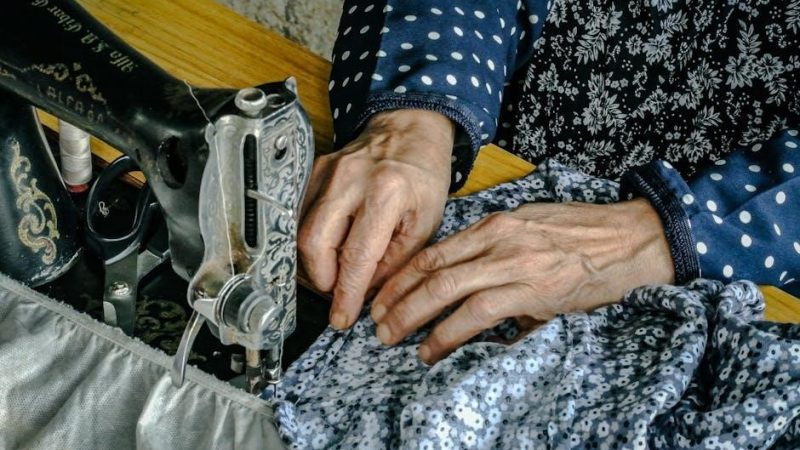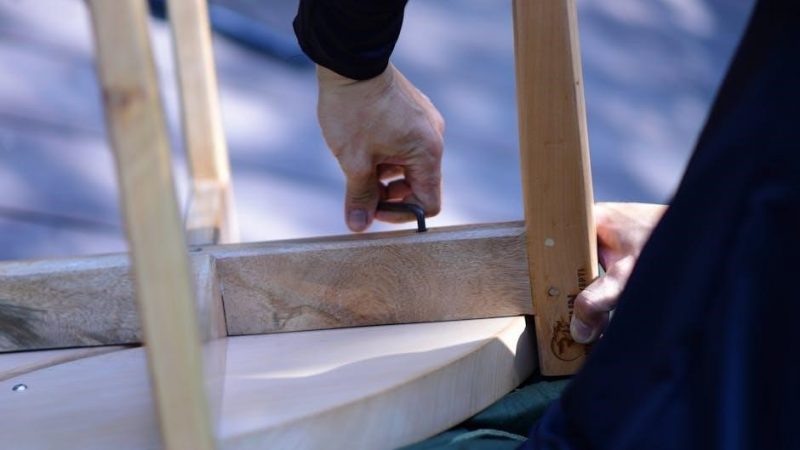d16y8 transmission manual
D16Y8 Transmission Manual⁚ A Comprehensive Guide
This guide provides a complete overview of the Honda Civic D16Y8 transmission‚ covering repair manuals‚ online resources‚ troubleshooting‚ rebuild kits‚ repair services‚ and maintenance tips. Find solutions for common problems and learn about transmission swaps.
Finding the Right Repair Manual
Securing the correct D16Y8 transmission repair manual is crucial for successful DIY repairs or informed decisions when seeking professional help. Several options exist‚ each with its pros and cons. Factory service manuals‚ often available online or through dealerships‚ provide the most comprehensive information‚ including detailed diagrams and specifications. However‚ these can be expensive. Haynes and Clymer manuals offer more affordable alternatives‚ though they might lack the depth of factory manuals. Online resources‚ such as forums dedicated to Honda Civics‚ offer valuable insights from experienced mechanics and owners who’ve tackled D16Y8 transmission issues. Remember to carefully check the manual’s compatibility with your specific year and model of Honda Civic to ensure accuracy and relevance. When choosing‚ consider your mechanical aptitude and budget. A detailed factory manual is ideal for experienced DIYers‚ while a Haynes or Clymer manual‚ combined with online forum support‚ may suffice for less experienced individuals. Always cross-reference information from multiple sources to ensure accuracy before undertaking any repairs.
Online Resources and Forums
The internet offers a wealth of resources for those tackling D16Y8 transmission challenges. Dedicated Honda forums‚ such as the one mentioned in the provided text (http://www.d-series.org/forums/)‚ are invaluable. These platforms connect enthusiasts and experienced mechanics‚ creating a collaborative environment for troubleshooting and sharing repair knowledge. Users post questions‚ seek advice‚ and share their experiences‚ providing a vast repository of real-world solutions. Before starting any repair‚ searching these forums can often reveal pre-existing solutions to common problems‚ saving time and preventing repeated mistakes. Remember to always approach online information critically; verify information across multiple sources. While forums offer invaluable support‚ the accuracy of user-generated content can vary. Supplement forum information with reputable repair manuals and official Honda documentation for the most accurate and reliable guidance. The combination of online community support and verified technical information provides a powerful resource for anyone working on a D16Y8 transmission.
Identifying Transmission Issues
Accurately diagnosing D16Y8 transmission problems is crucial for effective repair. Listen carefully for unusual noises during operation; grinding‚ whining‚ or humming sounds often indicate internal damage. Pay attention to shifting difficulties; problems engaging gears‚ difficulty shifting into specific gears‚ or a “popping out” of gear while driving suggest worn synchros‚ linkage issues‚ or internal component wear. Examine the transmission fluid for discoloration‚ unusual smell (burnt)‚ or low levels. Dark brown or black fluid signifies overheating and potential internal damage. A low fluid level could be due to a leak‚ requiring immediate attention. Assess the shifter feel; excessive play or looseness indicates worn bushings or linkage problems. Consider the vehicle’s overall performance; sluggish acceleration or unexpected jerking might indicate transmission-related issues‚ though these symptoms could also arise from other components. If you notice any of these symptoms‚ a professional inspection might be necessary to confirm the diagnosis and determine the extent of the damage before undertaking repairs. Ignoring early warning signs can lead to costly and extensive repairs later.
Common D16Y8 Transmission Problems
The Honda Civic D16Y8 transmission‚ while generally reliable‚ is susceptible to specific issues. Worn synchronizers are a frequent problem‚ leading to grinding noises during gear changes‚ especially when shifting quickly. This often necessitates a transmission rebuild or replacement of the affected synchronizers. Another common issue is the failure of bearings within the transmission. This can manifest as various noises‚ including grinding‚ whining‚ or a rumbling sound‚ depending on the specific bearing affected. Additionally‚ the shift linkage can wear out over time‚ resulting in imprecise shifting or a significant amount of play in the gear selector. Replacing worn bushings or adjusting the linkage can resolve this. Fluid leaks are also relatively common‚ usually stemming from worn seals or gaskets within the transmission housing. Leaks should be addressed promptly to prevent low fluid levels‚ which can lead to significant internal damage. Finally‚ clutch issues can sometimes be misdiagnosed as transmission problems‚ particularly a slipping clutch that might mimic the symptoms of a worn transmission. Therefore‚ thorough diagnosis is crucial to pinpoint the exact source of the problem before undertaking any repairs.
Transmission Rebuild Kits and Parts
When rebuilding a D16Y8 transmission‚ sourcing high-quality components is paramount. Complete rebuild kits offer convenience‚ bundling essential parts like synchronizers‚ bearings‚ seals‚ and gaskets. These kits often vary in scope‚ with some including only the most commonly worn items‚ while others provide a more comprehensive selection for a more thorough overhaul. Reputable suppliers specializing in Honda transmissions are recommended to ensure compatibility and durability. Individual parts can also be purchased separately‚ allowing for targeted repairs if only specific components are damaged. This approach requires a more detailed understanding of the transmission’s internal workings. Essential individual parts include bearings (both needle and roller bearings)‚ synchronizer rings (for each gear)‚ seals (input shaft‚ output shaft‚ etc.)‚ and gaskets (various sizes and types for different seals). Clutch components are often sold separately‚ as they’re considered part of the clutch system‚ not the transmission itself. Remember to consult a repair manual to identify the exact parts needed and their specifications to ensure correct fitment and functionality. When ordering‚ cross-reference part numbers to guarantee compatibility with your specific D16Y8 transmission model and year.
DIY Transmission Repair⁚ Steps and Precautions
Undertaking a D16Y8 transmission repair yourself requires mechanical aptitude‚ specialized tools‚ and a detailed repair manual. Begin by thoroughly cleaning the transmission‚ noting the location and orientation of each component before disassembly. Carefully remove the transmission from the vehicle‚ following the proper procedure outlined in your repair manual to prevent damage. Disassembly involves systematically removing components‚ paying close attention to the order and method of removal. Cleanliness is critical; use appropriate solvents and brushes to remove debris. Inspect all parts for wear and tear‚ replacing any damaged or worn components. When reassembling‚ ensure accurate alignment of gears‚ bearings‚ and synchronizers. Use a torque wrench to tighten bolts and nuts to the manufacturer’s specifications. Proper lubrication is crucial; apply the correct type and quantity of transmission fluid to each bearing and gear as specified in your repair manual. After reassembly‚ carefully reinstall the transmission‚ ensuring proper alignment with the engine and clutch. Before starting the engine‚ verify that the transmission fluid level is correct. Test-drive the vehicle cautiously‚ checking for unusual noises or shifting problems. If issues persist‚ seek professional assistance.
Professional Transmission Repair Services
Opting for professional transmission repair services offers several advantages‚ especially when dealing with complex issues or a lack of DIY experience. Reputable transmission shops possess specialized tools‚ diagnostic equipment‚ and experienced technicians proficient in handling various transmission problems. They can accurately diagnose the root cause of your transmission issues‚ whether it’s a simple fluid change or a major internal failure. This ensures efficient and effective repairs‚ minimizing the risk of further damage or incorrect fixes. Professional shops utilize high-quality replacement parts and fluids‚ ensuring optimal performance and longevity of your transmission. They also provide warranties on their services and repairs‚ offering peace of mind and protection against future issues. While DIY repairs can be cost-effective‚ professional services often prove more efficient and reliable in the long run‚ especially for intricate repairs. The expertise and resources of a professional shop translate to faster turnaround times and a higher likelihood of a successful repair. This ultimately saves you time and potential frustration associated with complex transmission work.
Swapping Transmissions⁚ Compatibility and Challenges
Swapping transmissions in a Honda Civic with a D16Y8 engine presents both opportunities and challenges. While some manual transmissions from other Honda models might seem compatible‚ ensuring a seamless fit requires careful consideration. Direct bolt-on replacements are often limited to transmissions originally designed for the D16Y8‚ such as those from similar year and model Civics. Attempting to use transmissions from significantly different models may require extensive modifications‚ potentially involving custom fabrication of mounting brackets‚ driveshafts‚ and other components. Compatibility also extends to the clutch system; the new transmission’s clutch must be compatible with the existing flywheel and pressure plate. Incorrect pairings can lead to misalignment‚ poor performance‚ and premature wear. Furthermore‚ the ECU (Engine Control Unit) might require reprogramming or replacement to accommodate the new transmission’s characteristics. This adds complexity and cost to the swap. Thorough research into transmission compatibility and potential challenges is crucial before undertaking a swap. Online forums and resources dedicated to Honda enthusiasts can provide valuable insights and guidance‚ helping you avoid potential pitfalls.
Choosing the Right Transmission Fluid
Selecting the appropriate transmission fluid is crucial for optimal D16Y8 transmission performance and longevity. Honda recommends using their genuine MTF (Manual Transmission Fluid)‚ specifically designed for their manual transmissions. This fluid ensures smooth shifting‚ reduces wear on internal components‚ and helps maintain overall transmission health. Improper fluid selection can lead to various problems‚ including difficult shifting‚ premature wear‚ and even transmission failure. If Honda MTF is unavailable‚ consult your owner’s manual or a trusted mechanic for suitable alternatives. Some sources suggest using a high-quality SAE 10W-30 or 10W-40 viscosity motor oil as a temporary substitute‚ but only in emergencies and with careful consideration. Note that this should only be a temporary fix‚ and the correct Honda MTF should be used as soon as possible. Always check the fluid level regularly‚ following the procedures outlined in your owner’s manual. Regular fluid changes are also important for maintaining the transmission’s health; consult your owner’s manual for recommended change intervals. Using the wrong fluid can severely damage your transmission‚ so careful selection is paramount.
Maintaining Your D16Y8 Transmission
Proper maintenance is key to extending the life of your D16Y8 transmission. Regular fluid changes are paramount; consult your owner’s manual for the recommended intervals. Using the correct Honda MTF (Manual Transmission Fluid) is crucial; using incorrect fluid can lead to premature wear and damage. Beyond fluid changes‚ inspect the transmission for leaks regularly. Check boots and seals for any signs of cracking or damage‚ addressing these promptly to prevent fluid loss. Periodically inspect the shift linkage for wear and tear; lubricate as needed to ensure smooth shifting. Pay attention to unusual noises during shifting; grinding or whining could indicate internal issues requiring professional attention. Avoid harsh driving habits such as sudden acceleration and aggressive shifting‚ as these put extra stress on the transmission components. When parking on an incline‚ engage the parking brake to reduce strain on the transmission. If you notice any unusual symptoms such as difficult shifting‚ grinding noises‚ or fluid leaks‚ address these promptly to prevent more significant problems. Regular inspection and preventative maintenance will significantly improve the lifespan and reliability of your D16Y8 transmission‚ saving you potential costly repairs down the line. Remember that neglecting maintenance can lead to expensive repairs or even a complete transmission failure.
Troubleshooting Shifting Problems
Experiencing shifting difficulties with your D16Y8 transmission? Let’s systematically troubleshoot the issue. Begin by checking the transmission fluid level; low fluid can cause difficult shifting and grinding. Ensure you’re using the correct Honda MTF fluid. Next‚ inspect the shift linkage for any looseness‚ binding‚ or damage. Worn bushings or linkage components can hinder smooth shifting. Check the clutch cable or hydraulic system (depending on your model) for proper adjustment and operation; A slipping clutch can manifest as difficulty engaging gears. Listen carefully for any unusual noises during shifting; grinding noises often indicate worn synchros or gears. If the problem persists‚ consider the possibility of internal transmission issues. A professional inspection might be necessary to diagnose problems like worn bearings‚ damaged gears‚ or other internal damage. Before assuming major internal damage‚ ensure all external components are functioning correctly. A simple adjustment or replacement of a worn part might resolve the shifting issues. Remember that incorrect fluid‚ worn linkage components‚ or a malfunctioning clutch can all affect shifting performance. Systematic troubleshooting‚ starting with the simplest checks‚ will often pinpoint the source of the problem. Don’t hesitate to seek professional help if the problem remains unresolved after thorough self-diagnosis.
Additional Resources and Information
Beyond the information provided here‚ numerous resources exist to assist with D16Y8 transmission maintenance and repair. Online forums dedicated to Honda enthusiasts‚ such as the D-series.org forum mentioned in the provided text‚ offer a wealth of collective knowledge and troubleshooting advice. Members often share experiences‚ solutions‚ and even DIY repair guides. Remember to always specify your vehicle’s year and model when seeking help to ensure accurate information. Reputable online retailers specializing in Honda parts‚ such as those selling Synchrotech rebuild kits‚ provide access to high-quality replacement components. These suppliers often offer technical assistance and can help determine the correct parts for your specific transmission. Consider consulting a professional mechanic specializing in Honda vehicles. Their expertise can be invaluable for diagnosing complex problems or performing major repairs. Lastly‚ remember that official Honda service manuals provide detailed technical information‚ diagrams‚ and specifications. These manuals‚ though often costly‚ are invaluable for in-depth repairs and understanding the intricacies of your D16Y8 transmission. Utilizing a combination of online communities‚ specialized parts suppliers‚ and professional mechanics‚ alongside factory manuals when possible‚ provides a comprehensive approach to maintaining your transmission’s health and performance.





